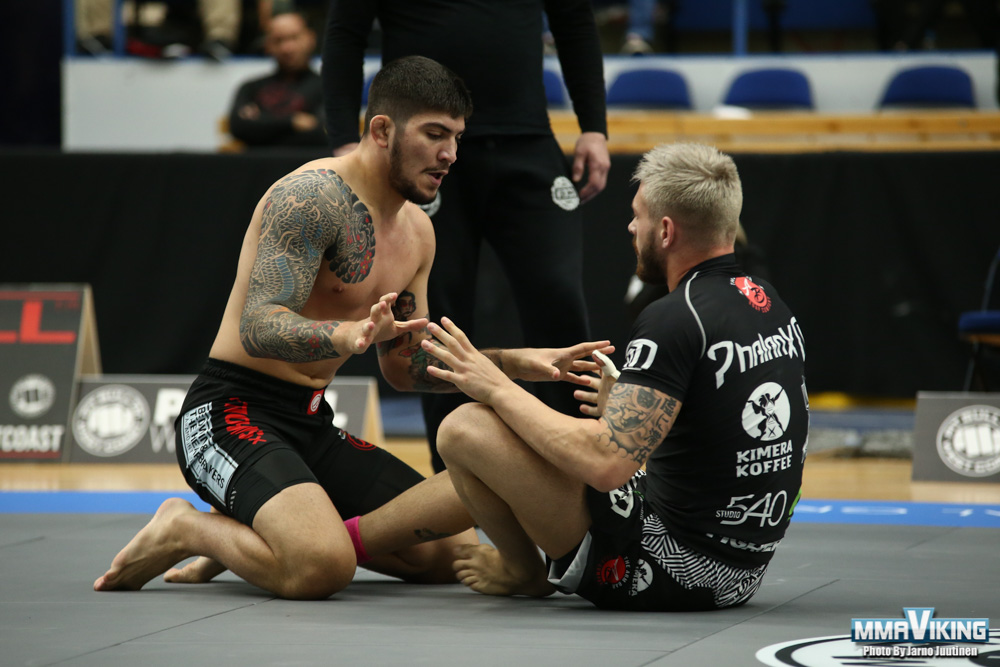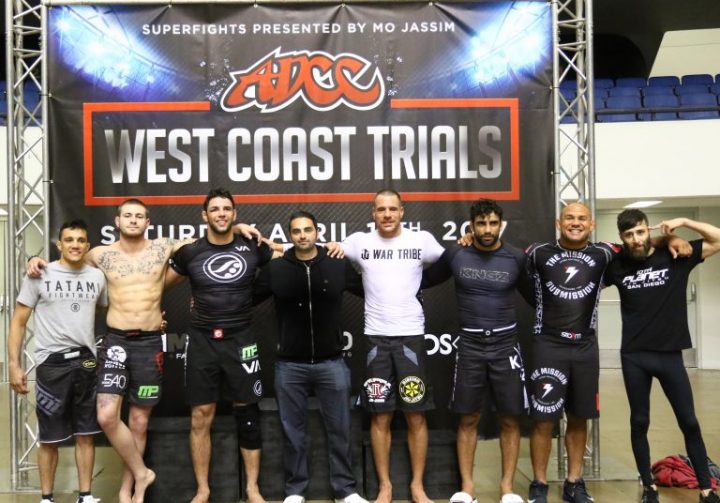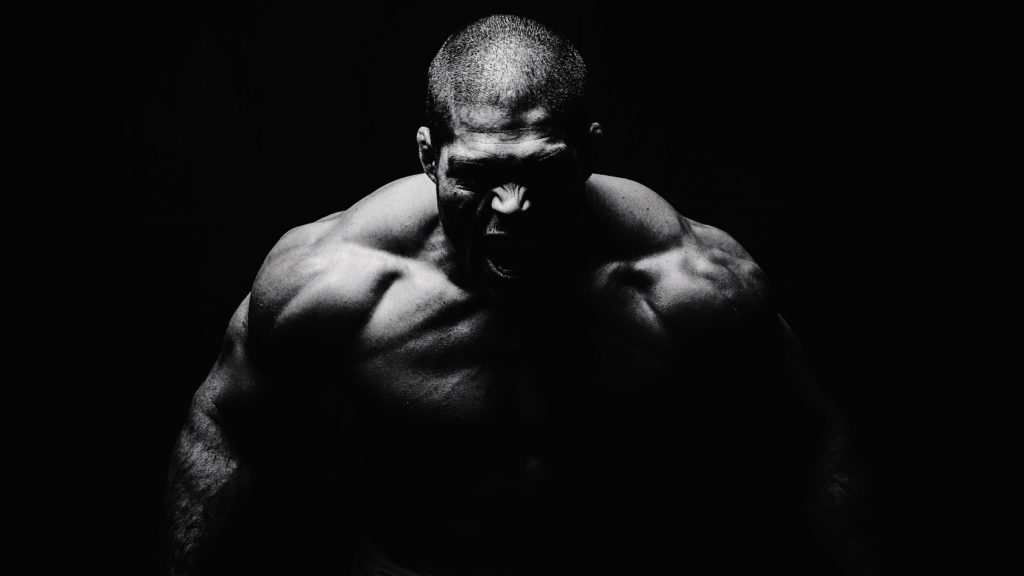Known in the community as “The Olympics of Grappling”, the Abu Dhabi Combat Club world championships is a bi-annual submission grappling competition and is considered, by many, to be the pinnacle of the sport.
One of the unique aspects of the ADCC, is how highly it is regarded in the entire world of grappling. The competition doesn’t just involve professional Brazilian Jiu-Jitsu competitors but also features high-level fighters from other grappling arts such as Lutra Livre, Catch Wrestling, Judo, Sambo and Mixed Martial Arts.
What makes ADCC different from many other competitions, is that there are only two ways to gain entry. By winning continental trial events which are held around the world, or by receiving an invitation to compete.
The History of ADCC
Originally held in Abu Dhabi, the ADCC was founded in 1998 by Sheik Tahoon Bin Zayed Al Nahyan (the son of former UAE president Sheikh Zayed bin Sultan Al Nahyan), alongside his Brazilian Jiu-jitsu instructor Nelson Monteiro. Master Royler Gracie said that the founding of the ADCC was the beginning of “the modern era of submission grappling”.
After many years of studying various grappling sports, Sheik Tahoon had the idea of creating a new grappling competition with the idea of “neutral” rules, which would allow competitors from all types of grappling arts to compete on an even playing field. And that was when the first ADCC competition was founded. Divisions were limited to just 16 per weight class and allowed almost all submissions, allowing the idea that all grappling sports could compete with each other.
The ADCC was also one of the first grappling competitions to award a substantial monetary prize for the winner of each weight division and absolute class.
After the first competition, fighters would go on to praise the ruleset as one of the best in the world for equality, which then piqued the interest of many fighters. The ADCC would go on to showcase the skills of many high-level MMA fighters looking to make a name for themselves in the grappling world. Many ADCC champions have gone on to be highly successful in their career in MMA also
In 2019, there are new faces to ADCC, West Coast Trials organiser Mo Jassim and Fight To Win Founder Seth Daniels.
Who is Mo Jassim?
Mo Jassim started his Jiu-Jitsu journey in 2003 when he first found Rickson Gracie’s academy in Los Angeles, after moving to Orange County shortly afterwards, he received his blue belt in 2005 at a Cleber Luciano affiliate gym and in 2015 he received his purple belt from JT Torres.
Mo attended his first ADCC competition in 2000, when it was an annual event in Abu Dhabi, and from there he officially became part of the promoter team in 2007. Mo is most well known for organising the most competitive trials at ADCC, the West Coast trials and after the 2017 Abu Dhabi, it was announced that he would be organising the 2019 ADCC and future events.
Mo has already stated that the 2019 ADCC World Championships will be the best one yet, with the help of Fight to Win promoter Seth Daniels.
The Future of the ADCC
Seth Daniels is most well-known as the founder of the Fight To Win promotion. One of the first real “Spectacle” Jiu-Jitsu promotions. Originally a concert and MMA production manager, Seth and his wife decided to start their F2W promotion back in 2015 and it has grown from strength to strength. Investing in “hundreds of thousands of dollars on production equipment”, Seth came up with the idea of promoting Jiu-jitsu concerts, and the idea of Fight 2 Win was born.
Seth came to Mo with the idea of truly celebrating the idea of ADCC with a spectacle which has never been matched, perfect for the Olympics of grappling.
 The ADCC Ruleset
The ADCC Ruleset
The ADCC ruleset is one of the most popular rulesets in the grappling community, mainly because it encourages and rewards action on the mats.
How to Win
A match-winner is decided through the following stipulations:
- If a competitor gives up or submits by physically tapping or by verbal submission.
- The competitor with the highest points total at the end of the allotted time will be declared the winner.
- If a referee feels that a competitor is unable to defend himself effectively or feels that their life is in danger.
- If a competitor breaks the rules twice in a match then they are disqualified.
Techniques
As with every competition, there are legal techniques and illegal techniques. One of the unique aspects of the ADCC was allowing heel hooks, something very few competitions allowed, however in the modern age of submission wrestling, these are a fairly common sight.
Legal Techniques
- Any kind of choke or strangulation (except for using the hand to close the windpipe).
- No holding of any clothing unless a gi is worn.
- All arm, shoulder and elbow locks are legal
- All leg locks are legal, including heel hooks.
- Slamming can be used only in order to prevent a submission attempt. Otherwise, it is considered as illegal.
Illegal Techniques
- No Full-Nelson or Crucifix position
- No striking of any kind
- No eye-gouging or fish hooking
- No grabbing the ears
- No hair pulling
- No small joint manipulation
- No thumbing (oil-checking)
- No scratching and pinching
- No biting
- No intentional touching of the groin area
- No hands, knees or elbows on face
- No slippery substances allowed on body or clothing
Scoring
Like many other grappling competitions, if a submission win is not achieved then a winner is decided by a points scoring system. All positions must be established and held for 3 seconds before points are awarded.
- Guard Pass – 3 points
- Knee on Belly – 2 points
- Mount – 2 points
- Back Mount = 3 points
- Takedown that ends in Guard or Half Guard – 2 points
- Takedown that ends past the Guard – 4 points
- Sweeps that ends in Guard or Half Guard – 2 points
- Sweeps that ends past the Guard – 4 points
- Sweep is considered when two fighters are facing each other, change the position from bottom to top and establish it for 3 sec. or more.
Unlike the IBJJF, the scoring system for ADCC is a little bit more intricate which rewards the most active competitor.
- Reversals are considered as a sweep.
- When changing multiple positions, points will be awarded only for the position that has been established for 3 seconds or more.
- Every sweep has to be done in one continuous motion in order to be awarded points.
- Points for a sweep will be awarded only if the fighter initiates the sweep, not if he is being attacked by his opponent and he ends up on top.
- When passing the guard going straight to mount or knee on the stomach in less than 3 seconds points will be given only for passing the guard.
Penalties and Negative points
Like we’ve said before the ADCC really promotes the idea of an active fighter, this is really true with the idea of negative points, which is pretty unique to the ADCC format.
- If a competitor jumps guard or goes from standing position to a non-standing position by any means and remains down for 3 seconds or more, he will be punished by a minus point.
- When a competitor disengages from contact and starts backing up and avoids engaging again he will be punished by minus point.
- A passive fighter will be warned twice and then will be punished by minus point. The referee will warn the passive player by the words “WARNING PASSIVITY” – after the first minus given there are not going to be any more warnings and the minus points will be given right-away if the fighter continues to be passive.
- If a fighter is very passive during the first half of the regular fights when there are no minuses, the referees will still give him WARNINGs for passivity and will punish him with a negative point when the second half of the fight starts!
- If two teammates fix a fight or closeout, they will both be disqualified from the tournament.
https://www.youtube.com/watch?v=um4LjnKkCLg
ADCC Match Times
So this is where things great really interesting with the ADCC, the first half of a match is submission only, and the second half of the match allows points scoring. They also include overtime (maximum of 2) if a winner cannot be decided in regulation time.
World Championship
Qualifying Rounds = 10 Minutes / 5 Minutes overtime if there is a draw with no advantage. (Max. 2 overtimes per fight)
Finals* = 20 Minutes / 10 Minutes overtime if there is a draw with no advantage. (Max. 2 overtimes per fight)
*During the “Finals” (20 min), the first 10 minutes are without positive points, but negative points start from the beginning of the fight until the end. The positive points are starting after the first 10 minutes until the end of the fight as well as on the overtime.
Trials
Qualifying Rounds = 6 Minutes / 3 Minutes overtime if there is a draw with no advantage. (Max. 1 overtime per fight)
Finals* = 8 Minutes / 4 Minutes overtime if there is a draw with no advantage. (Max. 1 overtime per fight)
*In the “Finals” (8 min), the first 4 minutes are without positive points, but negative points start from the beginning of the fight until the end. The positive points are starting after the first 4 minutes until the end of the fight as well as on the overtime.
National Championships
Qualifying Rounds = 6 Minutes / 3 Minutes overtime if there is a draw with no advantage. (Max. 1 overtime per fight)
Finals* = 8 Minutes / 4 Minutes overtime if there is a draw with no advantage. (Max. 1 overtime per fight)
*In the “Finals” (8 min), the first 4 minutes are without positive points, but negative points start from the beginning of the fight until the end. The positive points are starting after the first 4 minutes until the end of the fight as well as on the overtime.
ADCC Weight Classes
The ADCC consists of both male and female competitors in their respective gender category. While males have 5 divisions plus an absolute division, the female division, only has 2 and no absolute division, with the growth of top-level females in the sport, it would be good to see ADCC start to recognise this and allow more divisions.
Male ADCC Weight Classes
The weight classes for the male ADCC divisions are as follows:
- under 66 kg (- 145.2 lbs)
- under 77 kg (- 169.5 lbs)
- under 88 kg (- 193.7 lbs)
- under 99 kg (- 218.0 lbs)
- over 99 kg (+ 220.5 lbs)
- Absolute Class
Female ADCC Weight Classes
The weight classes for the female ADCC divisions are as follows:
- under 60.0 kg (- 132.2 lbs)
- over 60.0 kg (- 132.2 lbs)
ADCC Prize Money
One of the biggest draws for the ADCC is the substantial prize pot. With a prize pot of almost $250,000, it is one of the most highly sought after gold medals in the world of grappling.
Male Weight Division Prize Money
- 1st – $10,000
- 2nd – $5,000
- 3rd – $3,000
- 4th – $1,000
Male Absolute Division Prize Money
- 1st – $40,000
- 2nd – $10,000
- 3rd – $5,000
- 4th – $1,000
Female Weight Division Prize Money
- 1st – $6,000
- 2nd – $3,000
- 3rd – $2,000
- 4th – $1,000
Super Fight Prize Money
- Winner – $40,000
- Looser – $10,000
Awards
Best Fighter – $1,400.00
Best Takedown – $1,400.00
Fastest Submission – $1,400.00
Best Fight of Competition – $1,400.00 (split)
The ADCC Super Fight
At the end of every ADCC, the Super Fight is fought. This is the crowning glory that rounds off the ADCC championships and it features two matches, the legends match and the Championship match.
The legend match pitches two of grapplings legends against each other in a return to the ADCC and is regularly a fan favourite. However, the Championship Fight is where names are truly made.
The championship match pits the former super fight winner against the previous year’s absolute division winner. The Current ADCC Super Fight champion is ATOS co-founder Andre Galvao, who has successfully defended his title 3 times, in 2019 he will be going up against the absolute division winner Felipe Pena.
The Greatest ADCC Competitor of All Time?
This question gets thrown about a lot, “who is the greatest ADCC competitor of all time?” A lot of grapplers will have their own opinions but statistically, there is only one, Marcelo Garcia.
One of the greats of grappling Marcelo is also one of the greatest ADCC competitors of all time. He is the only person two win the championship 4 times and has a total of 14 submissions over the years he’s competed in the competition. The GOAT.


